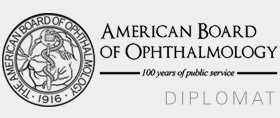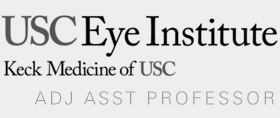Natural Glaucoma Treatments
Complementary and Alternative Medicine (CAM)
(Have Limited Evidence of Benefit )
Alternative Medicines that Have Limited Evidence of Benefit
in the Treatment of Glaucoma (Not Enough to Be Recommended)
The following supplements have laboratory evidence that would support a potential use in the treatment of glaucoma. As of this writing, however, I do not currently recommend their use as human trials have not been performed or are so limited that it is simply not possible to recommend an appropriate dose.
NOTE: The contents on this website are intended for educational purposes only and should in no way be viewed as medical advice. No treatment mentioned on this site is effective for everyone with glaucoma and it would be unwise to modify one’s own treatment without consultation and examination by a medical doctor properly trained in the diagnosis and treatment of glaucoma.
Supplements That Have Limited Evidence of Benefit in the Treatment of Glaucoma
Agmatine
Agmatine is a naturally occurring byproduct of the bacterial metabolism of L-Arginine. L-Arginine is an amino acid found in dietary proteins. Agmatine can be found in many fermented foods such as wine, beer, and sake.[1] It is even produced by our own gut bacteria. Although readily absorbed by the gut,[2] if taken with large amounts of protein its absorption will be decreased. This is because L-Arginine competes with Agmatine for gut absorption.[3] Once absorbed into the bloodstream Agmatine is rapidly removed from the bloodstream by the kidneys.[4] However, Agmatine does cross the blood-brain barrier.[5] Once in the brain it appears to stay there for a while.[6]
Evidence That Agmatine May Be Effective in the Treatment of Glaucoma
In animal models Agmatine has been shown to both protect retinal ganglion cells from injury[7] as well as lower the intraocular pressure (IOP).[8] Additionally, there are multiple studies supporting its role as a neuroprotective agent.[9] Unfortunately, there are no published human studies evaluating its potential glaucoma benefit.
Potential Side Effects and Risks of Agmatine
Agmatine appears to be relatively safe when taken in dosages commonly available in over-the-counter supplements. The only reported side effect is that of mild gastrointestinal discomfort.[10] Agmatine should not, however, be taken along with alcohol as it may worsen alcohol alcohol-induced stomach ulceration.[11]
Astaxanthin
Astaxanthin is a member of the class of molecules termed carotenoids. It is naturally found in certain species of microalgae, salmon, trout, shrimp, lobster, fish eggs, and a number of bird species.[12] Similar to beta-carotene, it has antioxidant properties. In fact, it may even be a more powerful anti-oxidant than beta-carotene.[13]
Evidence That Astaxanthin May Be Effective in the Treatment of Glaucoma
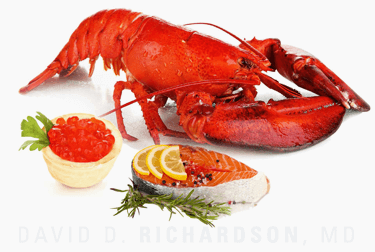 In one laboratory study rats with experimentally induced elevated IOP were given astaxanthin in doses well beyond what would normally be consumed by humans. In those rats receiving astaxanthin, the retina was both functionally and microscopically less damaged than in the rats that received no astaxanthin. Although these results are encouraging, no one knows if it is safe for humans to take astaxanthin in such high doses for any period of time. Hopefully human trials will be conducted both to confirm the benefit as well as to suggest a proper dose.
In one laboratory study rats with experimentally induced elevated IOP were given astaxanthin in doses well beyond what would normally be consumed by humans. In those rats receiving astaxanthin, the retina was both functionally and microscopically less damaged than in the rats that received no astaxanthin. Although these results are encouraging, no one knows if it is safe for humans to take astaxanthin in such high doses for any period of time. Hopefully human trials will be conducted both to confirm the benefit as well as to suggest a proper dose.
Potential Side Effects and Risks of Astaxanthin
Astaxanthin is “generally recognized as safe” when taken in amounts commonly found in foods.[14] Additionally, up to 4mg per day has been well-tolerated even when taken with other carotenoids for up to 12 months.[15] Up to 10 times that amount has been well-tolerated without significant side effects, but for shorter periods of time.[16] It should be noted, however, that a similar molecule, canthaxanthin, has been associated with loss of vision due to crystal formation in the retina.[17] As such, anyone taking astaxanthin who notes vision loss should immediately discontinue astaxanthin. Also of note is that supplementation with the carotenoid betacarotene has been associated with an increased risk of lung cancer. As astaxanthin is a carotenoid its use should probably be avoided by those who are active or have been active smokers.
Black Currant
Black Currant (Ribes nigrum) is a shrub that produces dark purple berries. Black currant berries contain anthocyanidins. Anthocyanidins are common pigments found in plants.
Evidence That Black Currant May Be Effective in the Treatment of Glaucoma
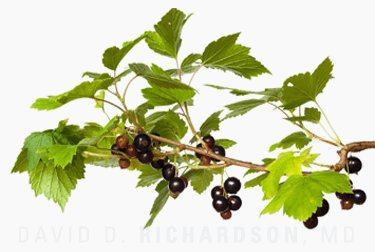 There is no direct evidence that consuming Black Currants or its extracts can treat glaucoma. However, evidence suggests that consumption of Black Currents can increase blood levels of Quercetin.[18] Any benefit to those with glaucoma is likely due to the neuroprotective and trabecular meshwork protective actions of Quercetin.
There is no direct evidence that consuming Black Currants or its extracts can treat glaucoma. However, evidence suggests that consumption of Black Currents can increase blood levels of Quercetin.[18] Any benefit to those with glaucoma is likely due to the neuroprotective and trabecular meshwork protective actions of Quercetin.
Potential Side Effects and Risks of Black Currant
Black Currant berries, juice, flowers, and leaves are generally recognized as safe (GRAS) by the FDA.[19]
Coenzyme Q10
Coenzyme Q10 (CoQ10) is naturally found in the mitochondria in our cells. Mitochondria are essentially the cell’s batteries or power generators. Coenzyme Q10 is a key enzyme in the production of this energy. It is also a powerful antioxidant and protects neurons against damage. As such, it is a neuroprotectant.
Evidence That Coenzyme Q10 May Be Effective in the Treatment of Glaucoma
Vision is lost from glaucoma because the cells that transmit the visual signal from the eye to the brain die. These cells are called Retinal Ganglion Cells. At least in one laboratory study, the Retinal Ganglion Cells of rats given Coenzyme Q10 survived after the intraocular pressure was raised.[20] We cannot, however, assume that what works in rats will work in humans. There are no studies looking at the use of Coenzyme Q10 in the prevention or treatment of glaucoma. That being said, glaucoma may have something in common with Parkinson’s.[21] Coenzyme Q10 has been shown to slow the changes associated with Parkinson’s disease.[22] Could it also, then, have a beneficial effect on glaucoma? It’s an intriguing, though currently unanswered, question.
Potential Side Effects and Risks of Coenzyme Q10
Coenzyme Q10 is generally well tolerated. However, nausea, vomiting, diarrhea, appetite reduction, and heartburn have been reported in approximately 1% of those who take this supplement. Some of these symptoms can be reduced if amounts over 100mg are split over multiple doses. An allergic rash may also be rarely encountered.
Salvia Miltiorrhiza (Dan Shen)
Salvia Miltiorrhiza is an extract from the root of the plant known as Red Sage or . The extract is a complex mixture of active chemicals. Among other things, these active ingredients have blood thinning and blood flow modifying activity.
Evidence That Salvia Miltiorrhiza (Dan Shen) May Be Effective in the Treatment of Glaucoma
Glaucoma is a disease of the retinal ganglion cells which make up the optic nerve. Over the years many different chemicals have been tested in laboratory animals to determine whether there is an effect on retinal cells. In one study of a rabbit model of glaucoma, intravenous Salvia miltiorrhiza was evaluated. Notably, retinal ganglion cell damage in these rabbits was reduced by intravenous treatment with Salvia miltiorrhiza.[23] Benefits seen in laboratory animals may be encouraging, but they don’t always translate to benefits in humans. The only study performed on humans using Salvia miltiorrhiza as a treatment of glaucoma used intramuscular injections of Salvia miltiorrhiza. In this study vision seemed to improve and visual fields appeared to stabilize. However, it is not known whether such an effect would be seen in those taking Salvia miltiorrhiza by mouth.[24]
Potential Side Effects and Risks of Salvia Miltiorrhiza (Dan Shen)
The more common side effects seen with Salvia miltiorrhiza include drowsiness, dizziness, itching, upset stomach, and undesirable bleeding.
Glutathione
Glutathione is naturally produced by the liver.[25] It is used by the cells in our bodies to make and repair DNA and proteins. It is also a very important natural antioxidant.
Evidence That Glutathione May Be Effective in the Treatment of Glaucoma
Oxidative damage to the trabecular meshwork appears to be more common in patients with glaucoma. Glutathione is a powerful antioxidant and is naturally found in the eye. It is reasonable, then, to believe that Glutathione could function to protect the trabecular meshwork from damage. If the trabecular meshwork is protected then perhaps loss of vision from glaucoma could be delayed. Glutathione’s potential role in the treatment of glaucoma is based on genetic studies. The gene for a free-radical scavenging protein Glutathione S-Transferase (GST) has a number of variations. One of these variations, called GSTM1 creates a protein that is not as effective at protecting from oxidative damage. Multiple studies have shown an association between the presence of GSTM1 and glaucoma.[26] If a defective Glutathione S-Transferase protein is allowing oxidative damage to occur in the eye then perhaps supplementing the amount of Glutathione could overcome this defect. That, at least, is one reason for using Glutathione supplementation. However, there are no animal or human studies that have looked at the use of Glutathione in the treatment of glaucoma.
Potential Side Effects and Risks of Glutathione
None reported.
Green Tea Catechins (EGCG)
 White, Green, Oolong, and Black teas made from the leaves of Camellia Sinensis contain water-soluble polyphenols called catechins. There are four main catechins found in the leaves of Camellia Sinensis of which epigallocatechin-3-gallate (EGCG) is the most potent. One cup of green tea contains approximately 50mg of EGCG. Less than 2% of the catechins ingested are absorbed into the bloodstream.[27] Bioavailability is increased when green tea catechins are ingested along with Quercetin[28] or fish oil.[29] Once absorbed into the bloodstream EGCG is able to pass through the blood-brain barrier.[30] There is also laboratory evidence that it penetrates the tissues of the eye.[31]
White, Green, Oolong, and Black teas made from the leaves of Camellia Sinensis contain water-soluble polyphenols called catechins. There are four main catechins found in the leaves of Camellia Sinensis of which epigallocatechin-3-gallate (EGCG) is the most potent. One cup of green tea contains approximately 50mg of EGCG. Less than 2% of the catechins ingested are absorbed into the bloodstream.[27] Bioavailability is increased when green tea catechins are ingested along with Quercetin[28] or fish oil.[29] Once absorbed into the bloodstream EGCG is able to pass through the blood-brain barrier.[30] There is also laboratory evidence that it penetrates the tissues of the eye.[31]
Evidence That Green Tea Catechins (EGCG) May Be Effective in the Treatment of Glaucoma
No studies have been published documenting a direct IOP lowering or vision stabilizing benefit from ingestion of green tea or its extract. However, at least in laboratory rats, oral EGCG has been shown to protect the retina from damage.[32] Additionally, green tea catechins have anti-oxidant properties. This effect appears to be enhanced when green tea catechins are ingested along with Quercetin or Ginkgo biloba (which contains Quercetin).[33]
Potential Side Effects and Risks of Green Tea Catechins (EGCG)
When consumed as a beverage, green tea does not appear to be associated with any toxicity[34] unless upwards of five liters is consumed in a day.[35] It’s worth noting that caffeine is also present in green tea and can be associated with rapid heart rate and insomnia.[36] Green tea catechins (specifically EGCG) are generally safe and welltolerated in doses up to 800mg.[37] Larger doses of EGCG, however, are associated with nausea. Additionally, liver toxicity has been associated with large doses of green tea extract[38] In extremely large doses (>500mg/kg) green tea catechins have been shown to be lethal in laboratory animals.
Luteolin
Luteolin (3’,4’,5,7-tetrahydroxyflavone) is a flavonoid that is naturally found in broccoli, cabbages, carrots, celery, green pepper, parsley, perilla, and chamomile tea.[39] Flavonoids act as natural anti-oxidants which scavenge free-radicals.[40]
Evidence That Luteolin May Be Effective in the Treatment of Glaucoma
No human studies have been published evaluating Luteolin’s possible glaucoma treatment benefits. Nonetheless, Luteolin has a number of properties that make it a promising potential treatment of glaucoma. For one, it passes through the blood-brain barrier which would give it direct access to the retinal tissue damaged by glaucoma.[41] Luteolin has anti-inflammatory, anti-oxidative, and neuroprotective characteristics.[42] Specifically, it has been shown to inhibit the proinflammatory gene expression in microglia.[43] Microglia are cells found in the retina and central nervous system that perform immune surveillance.[44] Depending upon the chemical signals they receive, microglia will act to either protect[45] or destroy nerve cells.[46] Microglia appear to be involved in a number of neurodegenerative diseases.[47] In particular they seem to play a role in retinal degeneration.[48] By nudging microglia away from “destroy” mode and into “protect” mode Luteolin acts as a neuroprotectant.
Potential Side Effects and Risks of Luteolin
Luteolin is generally recognized as safe (GRAS) by the FDA. However, gastrointestinal side effects such as nausea and vomiting may be encountered.[49] Hormone Sensitive Cancers or Conditions Luteolin is a flavonoid. Flavonoids have a structure that is similar to estrogen.[50] As such, Luteolin may alter estrogen metabolism. Women with breast, uterine, and ovarian cancer, as well as endometriosis and uterine fibroids should avoid use of flavonoid-containing supplements.
Saffron
Saffron is the term used to describe the highly valued spice extracted from the plant Crocus sativus. This spice is rich in the carotenoid derivatives crocin and crocetin. There is evidence that these active compound scan function as powerful antioxidants[108] and neuroprotectants.[109]
Evidence That Saffron Can Be Effective in the Treatment of Glaucoma
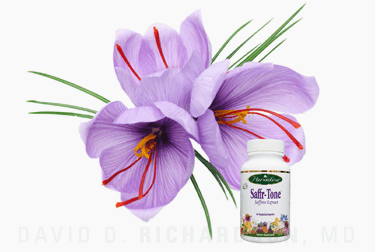 In 2014 a study was published comparing oral saffron against placebo in patients with stable glaucoma who were already treated with topical glaucoma medications.[110] Although the study was small (only 34 patients completed the study) the results were impressive. After only 3 weeks of using 30mg of “Sargol” grade saffron the intraocular pressure (IOP) dropped by 2mmHg. This effect, which was statistically significant, persisted at the 4 week visit. No such effect was noted in the placebo group.
In 2014 a study was published comparing oral saffron against placebo in patients with stable glaucoma who were already treated with topical glaucoma medications.[110] Although the study was small (only 34 patients completed the study) the results were impressive. After only 3 weeks of using 30mg of “Sargol” grade saffron the intraocular pressure (IOP) dropped by 2mmHg. This effect, which was statistically significant, persisted at the 4 week visit. No such effect was noted in the placebo group.
Potential Side Effects and Risks of Saffron
Saffron is generally recognized as safe[111] at 30mg per day. At 60mg per day the following has been reported: anxiety, change in appetite,drowsiness, nausea, vomiting, headache, sedation, and hypomania.[112] Severe side effects have been reported with oral intake of 5,000mg.[113] Saffron can even be fatal when taken in amounts as high as 12,000mg.[114] Of note is that supplementation with the carotenoid beta-carotene has been associated with an increased risk of lung cancer. As saffron is high in carotenoid compounds it should probably not be used by those who are active or have been active smokers.
Potential Drug Interactions
Antihypertensive Medications
At least in rats (and possibly guinea-pigs), Saffron appears to lower blood pressure.[115] In those whose blood pressure is not well-controlled this could be a good thing. However, care should be taken when used along with other blood-pressure lowering medications such as captopril (Capoten), enalapril (Vasotec), losartan (Cozaar), valsartan (Diovan), diltiazem (Cardizem), amlodipine (Norvasc), hydrochlorothiazide (HydroDIURIL), furosemide (Lasix), as well as many others.
Calcium Channel Blockers
Saffron extract has been shown in the laboratory to affect the action of the heart muscle.[116] As such, use of Saffron should be avoided (or only done with great caution and with the knowledge of one’s physician) in those who are already taking calcium channel blockers or other medications which affect the action of the heart muscle. Examples of Calcium channel blockers include verapamil (Calan, Covera-HS, Verelan), nifedipine (Procardia),and diltiazem (Cardizem, Dilacor, Tiazac).
Recommended Dosage
The dosage of saffron used in the 2014 study was 30mg per day. It is important to note, however, that this was “Sargol” grade saffron. Sargol grade is comprised of only the red stigma tips. It is considered to be the purest and most expensive saffron available. Very few commercially available saffron products use such a high grade and it is simply not known whether or how much of a lower grade would have the same IOP lowering effect noted in the 2014 study.
It should also be noted that pure saffron ranks as one of the 20 most valuable materials by weight (valued at roughly $5,000 USD per pound). As such, it’s not going to be cheap. Inexpensive “saffron”products most likely are either made up of lower grades of saffron(such as “Pushal”, “Pushali”, or “Bunch”) or are not pure saffron.
Expect to pay $20-50 for a one month supply. The brand of saffron I currently recommend is Paradise Herbs Saffr-Tone. Each capsule contains 15mg of saffron stigma tips. In order to achieve the equivalent dosage as that used in the 2014 study one capsule should be taken twice daily.
Magnesium
Magnesium is an element with atomic number 12. It has many clinical uses though the most common over-the-counter use is as a laxative.
Evidence That Magnesium May Be Effective in the Treatment of Glaucoma
Magnesium has been called “nature’s calcium channel blocker”.[51] Why might this be important in the treatment of glaucoma? Calcium channel blockers have been studied as a potential treatment of glaucoma.[52] There is evidence that nifedipine (a commonly used calcium channel blocker) can stabilize visual fields in those with normal tension glaucoma and/or those with peripheral vascular disease.[53] This potential benefit may be due to an increase in blood supply to the eye.[54] However, nifedipine has significant systemic side effects which would likely outweigh the unproven potential benefit to those with glaucoma. Magnesium, on the other hand, is well-tolerated when taken in oral doses of less than 350mg per day. Could it provide an effective yet low risk benefit to those with glaucoma? The only study to evaluate the effect of Magnesium on visual fields was published in 1995.[55] This was a small study of only 10 patients, all of whom also had a “vasospastic syndrome” and progressive loss of visual field despite “normal or normalized intraocular pressure”. Each patient was given 125.5mg of Magnesium to be taken twice daily for a month. Although there was a tendency toward visual field improvement, this did not reach statistical significance. Magnesium’s potential benefit for those with glaucoma may also be subject to the Goldilocks conundrum: too little Magnesium and there is not measurable benefit whereas too much Magnesium may actually worsen glaucoma. In one study those who were taking higher doses of Magnesium (>330mg/day) were three times more likely to have glaucoma than those taking daily doses of less than 300mg/day.[56]
Potential Side Effects and Risks of Magnesium
Magnesium is generally well tolerated with few potential side effects if taken orally in doses of less than 350mg per day.[57] The most commonly noted side effect is loose stool and diarrhea. Indeed, many common over-the-counter laxatives are essentially large doses of Magnesium (e.g. Milk of Magnesia). Although Magnesium is well-tolerated when taken by mouth there is insufficient evidence to support its role in the treatment of glaucoma. Additionally, the potential for prescription drug interaction is significant enough to avoid use of this supplement with any of the classes of medications listed above. Finally, there appears to be an association with high amounts of Magnesium supplementation and increased risk of glaucoma.
Quercetin
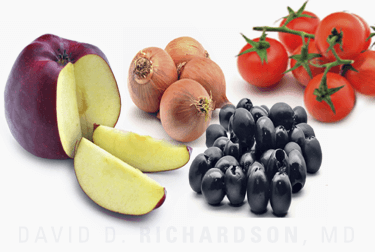 Quercetin is a member of the flavonoid family of naturally occurring compounds. It can be found in apples, asparagus, berries (such as bilberries, black currants, and alpine cranberries) broccoli, Ginkgo biloba,[58] green beans, kale, onions, red wine, tea, and tomatoes.[59] It is most concentrated in the leaves and skin of fruits and vegetables. When modified by the addition of rutinose (a sugar) Quercetin is known as Rutin.[60] There is laboratory evidence that it has antioxidant[61] and anti-inflammatory[62] properties. At higher doses, however, it may also increase oxidative damage.[63] Additionally, the anti-inflammatory properties noted in the laboratory may not be active in the body.[64] Its potential benefit as an oral supplement, however, is limited by low bioavailability (the amount ingested that is actually absorbed into the bloodstream). Once in the bloodstream evidence suggests that only a small percentage of it crosses the blood-brain barrier.[65] However, once in the brain it appears to have both an anti-inflammatory[66] and neuroprotective[67] effect, at least in concentrations expected from moderate oral supplementation.[68] In higher concentrations, however, Quercetin may be toxic to neurons.[69]
Quercetin is a member of the flavonoid family of naturally occurring compounds. It can be found in apples, asparagus, berries (such as bilberries, black currants, and alpine cranberries) broccoli, Ginkgo biloba,[58] green beans, kale, onions, red wine, tea, and tomatoes.[59] It is most concentrated in the leaves and skin of fruits and vegetables. When modified by the addition of rutinose (a sugar) Quercetin is known as Rutin.[60] There is laboratory evidence that it has antioxidant[61] and anti-inflammatory[62] properties. At higher doses, however, it may also increase oxidative damage.[63] Additionally, the anti-inflammatory properties noted in the laboratory may not be active in the body.[64] Its potential benefit as an oral supplement, however, is limited by low bioavailability (the amount ingested that is actually absorbed into the bloodstream). Once in the bloodstream evidence suggests that only a small percentage of it crosses the blood-brain barrier.[65] However, once in the brain it appears to have both an anti-inflammatory[66] and neuroprotective[67] effect, at least in concentrations expected from moderate oral supplementation.[68] In higher concentrations, however, Quercetin may be toxic to neurons.[69]
Evidence That Quercetin May Be Effective in the Treatment of Glaucoma
There is no direct evidence that Quercetin could have an IOP lowering effect on the eye. Its purported benefit to patients with glaucoma is related to its neuroprotective effect.[70] The eye naturally produces enzymes called Peroxiredoxins (PRDXs) which neutralize hydrogen peroxide. Quercetin has been shown in the laboratory to increase the production of Peroxiredoxins by trabecular meshwork cells.[71]
Potential Side Effects and Risks of Quercetin
Quercetin appears to be safe when used orally in amounts up to 1,000mg per day for up to three months.[72] Longer term studies are not available so chronic, ongoing use may or may not be safe. Additionally, intravenous (IV) quercetin has been associated with kidney damage.[73] Side effects of oral Quercetin include headaches and tingling of the arms and/or legs.[74] There is some evidence that Quercetin may worsen memory performance.[75] Hormone Sensitive Cancers or Conditions Quercetin is a flavonoid. Flavonoids have a structure that is similar to estrogen.[76] As such, Quercetin may alter estrogen metabolism. Women with breast, uterine, and ovarian cancer, as well as endometriosis and uterine fibroids should avoid use of flavonoid containing supplements.
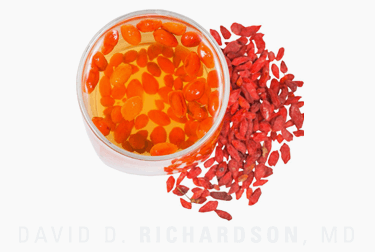 Wolfberry (Lycium barbarum) aka Goji Berry
Wolfberry (Lycium barbarum) aka Goji Berry
Wolfberry (Lycium barbarum) is a fruit that has been used in traditional Chinese medicine. It also goes by the name Goji berry. Lycium barbarum polysaccharides (LBP) are believed to be the active component.
Evidence That Wolfberry (Lycium barbarum) aka Goji Berry May Be Effective in the Treatment of Glaucoma
There is laboratory evidence that lycium barbarum polysaccharides (LBP) can protect retinal ganglion cells (RGCs) from damage caused by elevated intraocular pressure (IOP).[77] The retina contains cells call microglia which can either be protective or damaging to the retinal ganglion cells.[78] The microglia in rats fed lycium barbarum polysaccharides (LBP) were shown to have a protective effect on the retinal ganglion cells.[79] Additionally, LBP has anti-oxidant properties.[80]
Potential Side Effects and Risks of Wolfberry (Lycium barbarum) aka Goji Berry
There are few reported side effects when taken in moderate doses commonly available in over-the-counter Goji juice products.[81] However, Goji contains betaine which can increase the risk of spontaneous abortion in pregnant women.[82] As such, it should not be used during pregnancy.
References
[1] Galgano F, et al. Focused review: agmatine in fermented foods. Front Microbiol. -2012
Regulatory mechanisms underlying agmatine homeostasis in humans. Am. J. Physiol. Gastrointest. Liver Physiol. 295 (5): G1104–10. doi:10.1152/ajpgi.90374.2008. PMID 18832451
[3] Molderings GJ, et al. Gastrointestinal uptake of agmatine: distribution in tissues and organs and pathophysiologic relevance. Ann N Y Acad Sci. (2003)
[4] Huisman H, Wynveen P, Nichkova M, Kellermann G (2010). Novel ELISAs for screening of the biogenic amines GABA, glycine, beta-phenylethylamine, agmatine, and taurine using one derivatization procedure of whole urine samples. Anal. Chem. 82 (15): 6526–33. doi:10.1021/ac100858u. PMID 20586417
[5] Piletz JE, et al. Agmatine crosses the blood-brain barrier. Ann N Y Acad Sci. (2003)
[6] Roberts JC, et al. Pharmacodynamic and pharmacokinetic studies of agmatine after spinal administration in the mouse. J Pharmacol Exp Ther. (2005)
[7] Hong S, et al. Agmatine protects retinal ganglion cells from hypoxia-induced apoptosis in transformed rat retinal ganglion cell line. BMC Neurosci. (2007)
[8] Hong S, et al. Ocular hypotensive effects of topically administered agmatine in a chronic ocular hypertensive rat model. Exp Eye Res. (2010)
[9] Wang CC, et al. Beneficial effect of agmatine on brain apoptosis, astrogliosis, and edema after rat transient cerebral ischemia. BMC Pharmacol. (2010)
Kim JH, et al. Agmatine attenuates brain edema through reducing the expression of aquaporin-1 after cerebral ischemia. J Cereb Blood Flow Metab. (2010)
Lee WT, et al. Neuroprotective effects of agmatine on oxygen-glucose deprived primary-cultured astrocytes and nuclear translocation of nuclear factor-kappa B. Brain Res. (2009)
Kim JH, et al. Agmatine reduces infarct area in a mouse model of transient focal cerebral ischemia and protects cultured neurons from ischemia-like injury. Exp Neurol. (2004)
Feng Y, Piletz JE, Leblanc MH. Agmatine suppresses nitric oxide production and attenuates hypoxic-ischemic brain injury in neonatal rats. Pediatr Res. (2002)
[10] Keynan O, et al. Safety and Efficacy of Dietary Agmatine Sulfate in Lumbar Discassociated Radiculopathy. An Open-label, Dose-escalating Study Followed by a Randomized, Double-blind, Placebo-controlled Trial. Pain Med. (2010)
[11] Utkan T, et al. Investigation on the mechanism involved in the effects of agmatine on ethanol-induced gastric mucosal injury in rats. Life Sci. (2000)
[13] http://www.astaxanthin.org.
[14] Electronic Code of Federal Regulations. Title 21. Part 182 — Substances Generally Recognized As Safe. Available at: http://ecfr.gpoaccess.gov/cgi/t/text/ text-idx?c=ecfr&sid 786bafc6f6343634fbf79fcdca7061e1&rgn=div5&view= text&node=21:3.0.1.1.13&idno=21
[15] Parisi V, Tedeschi M, Gallinaro G, et al. Carotenoids and antioxidants in age-related maculopathy italian study: multifocal electroretinogram modifications after 1 year. Ophthalmology 2008;115:324-33.
[16] Comhaire FH, El Garem Y, Mahmoud A, et al. Combined conventional/antioxidant “Astaxanthin” treatment for male infertility: a double blind, randomized trial. Asian J Androl 2005;7:257-62.
Yamashita E. The effect of a dietary supplement containing astaxanthin on skin condition. Carotenoid Sci. 2006;10:91-95.
Andersen LP, Holck S, Kupcinskas L, et al. Gastric inflammatory markers and interleukins in patients with functional dyspepsia treated with astaxanthin. FEMS Immunol.Med Microbiol. 2007;50:244-48.
Kupcinskas L, Lafolie P, Lignell A, et al. Efficacy of the natural antioxidant astaxanthin in the treatment of functional dyspepsia in patients with or without Helicobacter pylori infection: A prospective, randomized, double blind, and placebo-controlled study. Phytomedicine. 2008;15:391-99.
Yoshida H, Yanai H, Ito K, Tomono Y, et al. Administration of natural astaxanthin increases serum HDL-cholesterol and adiponectin in subjects with mild hyperlipidemia. Atherosclerosis 2010;209:520-23.
[17] Espaillat A, Aiello LP, Arrig PG, et al. Canthaxanthin retinopathy. Arch Ophthalmol 1999;117:412-3.
[18] Erlund I, Marniemi J, Hakala P, et al. Consumption of black currants, lingonberries and bilberries increases serum quercetin concentrations. Eur J Clin Nutr 2003;57:37- 42
[19] Electronic Code of Federal Regulations. Title 21. Part 182 — Substances Generally Recognized As Safe. Available at: http://ecfr.gpoaccess.gov/cgi/t/text/ text-idx?c=ecfr&sid= 786bafc6f6343634fbf79fcdca7061e1&rgn=div5&view= text&node=21:3.0.1.1.13&idno=21
[20] Nucci C, Tartaglione R, Cerulli A. Retinal damage caused by high intraocular pressureinduced transient ischemia is prevented by coenzyme Q10 in rat. Int Rev Neurobiol. 2007;82:397–406.
[21] Bayer AU, Keller ON, Ferrari F, et al. Association of glaucoma with neurodegenerative diseases with apoptotic cell death: Alzheimer’s disease and Parkinson’s disease. Am J Ophthalmol. 2002;133:135–137.
[22] Shults CW, Oakes D, Kieburtz K, et al. Effects of coenzyme Q(10) in early Parkinson disease – evidence of slowing of the functional decline. Arch Neurol . 2002;59:1541– 1552
[23] Zhu MD, Cai FY. Evidence of compromised circulation in the pathogenesis of optic nerve damage in chronic glaucomatous rabbit. Chin Med J. 1993;106:922–927.
[24] Wu ZZ, Jiang YQ, Yi SM, et al. Radix salviae miltiorrhizae in middle and late-stage glaucoma. Chin Med J . 1983;96:445–447.
[25] Anderson ME. Glutathione: an overview of biosynthesis and modulation. Chem Biol Interact 1998;24;111-112:1-14. Lu SC. Regulation of hepatic glutathione synthesis: current concepts and controversies. FASEB J 1999;13:1169-83.
[26] Joronen E, Tasa G, Veromann S, et. al. Polymorphic glutathione S-transferase M1 is a risk factor of primary open angle glaucoma among Estonians. Exp. Eye Res. 2000; 71:447 – 452.
Unal M nal, Gu¨ven M, Devranog˘k lu, O¨ zaydın A, et al. Glutathione transferase M1 and T1 genetic polymorphisms are related to the risk of primary open-angle glaucoma: a study in a Turkish population. Br J Ophthalmol. 2007;91:527–530.
Khaled K, Abu-Amero, Morales J, et al. Glutathione S-transferase M1 and T1 polymorphisms in Arab glaucoma patients. Molecular Vision. 2008;14:425-430. Abdel
Rasool HA, Nowier SR, Gheith M, et al. The Risk of Primary Open Angle Glaucoma and Glutathione S-Transferase M1 and T1 Polymorphism among Egyptians. J American Science. 2010;6(12):375-381.
[27] Warden BA, et al. Catechins are bioavailable in men and women drinking black tea throughout the day. J Nutr. (2001)
[28] Wang P, Heber D, Henning SM. Quercetin increased bioavailability and decreased methylation of green tea polyphenols in vitro and in vivo. Food Funct. (2012)
[29] Giunta B, et al. Fish oil enhances anti-amyloidogenic properties of green tea EGCG in Tg2576 mice. Neurosci Lett. (2010)
[30] Suganuma M, et al. Wide distribution of {3H}(-)-epigallocatechin gallate, a cancer preventive tea polyphenol, in mouse tissue. Carcinogenesis. (1998)
[31] Chu et al. Green Tea Catechins and Their Oxidative Protection in the Rat Eye. Journal of Agricultural and Food Chemistry, 2010; 58 (3): 1523 DOI: 10.1021/jf9032602
[32] Zhang B, Rusciano D, Osborne NN. Orally administered epigallocatechin gallate attenuates retinal neuronal death in vivo and light-induced apoptosis in vitro. Brain Res. 2008 Mar 10;1198:141-52.
[33] Jain DP, Pancholi SS, Patel R. Synergistic antioxidant activity of green tea with some herbs. J Adv Pharm Technol Res. (2011)
[34] Chow HH, et al. Pharmacokinetics and safety of green tea polyphenols after multipledose administration of epigallocatechin gallate and polyphenon E in healthy individuals. Clin Cancer Res. (2003)
[35] Pisters KM, Newman RA, Coldman B, et al. Phase I trial of oral green tea extract in adult patients with solid tumors. J Clin Oncol 2001;19:1830-8. Jatoi A, Ellison N, Burch PA, et al. A phase II trial of green tea in the treatment of patients with androgen independent metastatic prostate carcinoma. Cancer 2003;97:1442-6.
[36] Institute of Medicine. Caffeine for the Sustainment of Mental Task Performance: Formulations for Military Operations. Washington, DC: National Academy Press, 2001
[37] Ullmann U, et al. Plasma-kinetic characteristics of purified and isolated green tea catechin epigallocatechin gallate (EGCG) after 10 days repeated dosing in healthy volunteers. Int J Vitam Nutr Res. (2004)
Chow HH, et al. Effects of repeated green tea catechin administration on human cytochrome P450 activity. Cancer Epidemiol Biomarkers Prev. (2006)
[38] Bonkovsky HL. Hepatotoxicity associated with supplements containing Chinese green tea (Camellia sinensis). Ann Intern Med 2006;144:68-71.
[39] Miean KH, Mohamed S. Flavonoid (myricetin, quercetin, kaempferol, luteolin, and apigenin) content of edible tropical plants. J. Agric. Food Chem 49:3106–3112.
[40] Rice-Evans CA, Miller NJ, Paganga G: Structure-antioxidant activity relationships of flavonoids and phenolic acids. Free Radic Biol Med 1996,20:933-956.
[41] Wruck CJ, Claussen M, Fuhrmann G, et al. Luteolin protects rat PC12 and C6 cells against MPP+ induced toxicity via an ERK dependent Keap1-Nrf2-ARE pathway. J. Neural Transm. Suppl 2007;72:57–67.
[42] Lien EJ, Ren S, Bui HH, Wang R. Quantitative structure-activity relationship analysis of phenolic antioxidants. Free Radic. Biol. Med 1999;26:285–294.
Lopez-Lazaro M: Distribution and biological activities of the flavonoid luteolin. Mini Rev Med Chem 2009, 9:31-59.
Chen HQ, Jin ZY, Wang XJ, Xu XM, Deng L, Zhao JW: Luteolin protects dopaminergic neurons from inflammation-induced injury through inhibition of microglial activation. Neurosci Lett 2008,448:175-179.
Rezai-Zadeh K, Ehrhart J, Bai Y, Sanberg PR, Bickford P, Tan J, Shytle RD: Apigenin and luteolin modulate microglial activation via inhibition of STAT1-induced CD40 expression. J Neuroinflammation 2008, 5:41.
Jang S, Kelley KW, Johnson RW: Luteolin reduces IL-6 production in microglia by inhibiting JNK phosphorylation and activation of AP-1. Proc Natl Acad Sci USA 2008, 105:7534-7539.
[43] Dirscherl et al.: Luteolin triggers global changes in the microglial transcriptome leading to a unique anti-inflammatory and neuroprotective phenotype. Journal of Neuroinflammation 2010 7:3.
[44] Streit WJ: Microglia as neuroprotective, immunocompetent cells of the CNS. Glia 2002, 40:133-139.
Nimmerjahn A, Kirchhoff F, Helmchen F: Resting microglial cells are highly dynamic surveillants of brain parenchyma in vivo. Science 2005, 308:1314-1318.
[45] Streit WJ: Microglia and neuroprotection: implications for Alzheimer’s disease. Brain Res Brain Res Rev 2005, 48:234-239.
[46] Ransohoff RM, Perry VH: Microglial physiology: unique stimuli, specialized responses. Annu Rev Immunol 2009, 27:119-145.
[47] Orr CF, Rowe DB, Halliday GM: An inflammatory review of Parkinson’s disease. Prog Neurobiol 2002, 68:325-340.
Sargsyan SA, Monk PN, Shaw PJ: Microglia as potential contributors to motor neuron injury in amyotrophic lateral sclerosis. Glia 2005, 51:241-253.
El Khoury J, Luster AD: Mechanisms of microglia accumulation in Alzheimer’s disease: therapeutic implications. Trends Pharmacol Sci 2008,29:626-632.
[48] Langmann T: Microglia activation in retinal degeneration. J Leukoc Biol 2007, 81:1345- 1351.
[49] Yu MC, Chen JH, Lai CY, et al. Luteolin, a non-selective competitive inhibitor of phosphodiesterases 1–5, displaced [3H]-rolipram from high-affinity rolipram binding sites and reversed xylazine/ketamine-induced anesthesia. European Journal of Pharmacology 2010;627 (1–3): 269-75.
[50] Miksicek RJ. Commonly occurring plant flavonoids have estrogenic activity. Mol Pharmacol. 1993 Jul;44(1):37-43.
[51] Iseri LLT, French JH. Magnesium: Nature’s physiologic calcium channel blocker. Am Heart J 1984;108:188-193.
[52] Netland PA, Chatuverdi N, Dreyer EB. Calcium channel-blockers in the management of low-tenstion and open-angle glaucoma. Am J Ophthalmol 1993;115:608-613.
[53] Gaspar AZ, Flammer J, Hendrickson Ph. Influence of nifedipine on the visual fields of patients with optic-nerve-head diseases. Eur J Ophthalmol 19994;4:24-28.
Gasser P, Flammer J. Short- and long-term effect of nifedipine on the visual field in patients with presumed vasospasm. J Int Med Res 1990;18:334-339.
[54] Miyoshi T. Effect of nifedipine on choroidal circulation. 1. Change of choroidal blood flow in rabbits. Trans Jpn Soc Ophthalmol 1984;35:664-670.
[55] Gaspar AZ, Gasser P, Flammer J. The influence of Magnesium on visual field and peripheral vasospasm in glaucoma. Ophthalmologica 1995;209:11-13.
[56] Ramdas WD, Wolfs RC, Kiefte-de Jong JC, et. Nutrient intake and risk of open-angle glaucoma: The Rotterdam Study. Eur J Epidemiol 2012;27:5:385-93.
[57] Food and Nutrition Board, Institute of Medicine. Dietary Reference Intakes for Calcium, Phosphorus, Magnesium, Vitamin D, and Fluoride. Washington, DC: National Academy Press, 1999.
[58] Wang FM, Yao TW, Zeng S. Determination of quercetin and kaempferol in human urine after orally administrated tablet of ginkgo biloba extract by HPLC. J Pharm Biomed Anal. (2003)
[59] Anon. Quercetin. Alt Med Rev 1998;3:140-3. Nemeth K, Piskula MK. Food content, processing, absorption and metabolism of onion flavonoids. Crit Rev Food Sci Nutr 2007;47:397-409.
[60] Murota K, et al. alpha-Oligoglucosylation of a sugar moiety enhances the bioavailability of quercetin glucosides in humans. Arch Biochem Biophys. (2010)
[61] Lean ME, Noroozi M, Kelly I. Dietary flavonols protect diabetic human lymphocytes against oxidative damage to DNA. Diabetes 1999;48:176-81.
[62] Anon. Quercetin. Alt Med Rev 1998;3:140-3. Nieman DC, Henson DA, Davis JM, et al. Quercetin’s influence on exercise-induced changes in plasma cytokines and muscle and leukocyte cytokine mRNA. J Appl Physiol 2007;103:1728-35.
[63] Harwood M, Danielewska-Nikiel B, Borzelleca JF, et al. A critical review of the data related to the safety of quercetin and lack of evidence of in vivo toxicity, including lack of genotoxic / carcinogenic properties. Food Chem Toxicol 2007;45:2179-205.
[64] de Pascual-Teresa S, Johnston KL, DuPont MS, et al. Quercetin metabolites downregulate cyclooxygenase-2 transcription in human lymphocytes ex vivo but not in vivo. J Nutr 2004;134:552-7.
[65] Faria A, et al. Flavonoid transport across RBE4 cells: A blood-brain barrier model. Cell Mol Biol Lett. (2010) Ren SC, et al. {Quercetin permeability across blood-brain barrier and its effect on the viability of U251 cells}. Sichuan Da Xue Xue Bao Yi Xue Ban. -2010
Dan H, Du WT, Fan XJ. {Study of flavanoids extracted from onion on the blood-brain barrier permeation and neuroprotective effects}. Zhongguo Zhong Xi Yi Jie He Za Zhi. -2011
[66] Chen JC, et al. Inhibition of iNOS gene expression by quercetin is mediated by the inhibition of IkappaB kinase, nuclear factor-kappa B and STAT1, and depends on heme oxygenase-1 induction in mouse BV-2 microglia. Eur J Pharmacol. (2005)
Kwon YS, et al. Modulation of suppressive activity of lipopolysaccharide-induced nitric oxide production by glycosidation of flavonoids. Arch Pharm Res. (2004)
Bureau G, Longpré F, Martinoli MG. Resveratrol and quercetin, two natural polyphenols, reduce apoptotic neuronal cell death induced by neuroinflammation. J Neurosci Res. (2008)
[67] Protective Effects of Quercetin and Vitamin C against Oxidative Stress-Induced Neurodegeneration Sasaki N, et al. Protective effects of flavonoids on the cytotoxicity of linoleic acid hydroperoxide toward rat pheochromocytoma PC12 cells. Chem Biol Interact. (2003)
[68] Shirai M, et al. Effect of a conjugated quercetin metabolite, quercetin 3-glucuronide, on lipid hydroperoxide-dependent formation of reactive oxygen species in differentiated PC-12 cells. Free Radic Res. (2006)
[69] Jakubowicz-Gil J, et al. Cell death and neuronal arborization upon quercetin treatment in rat neurons. Acta Neurobiol Exp (Wars). (2008)
[70] Dok-Go H, Lee KH, Kim HJ, et al. Neuroprotective effects of anti-oxidative fl avonoids, quercetin, (+)-dihydroquercetin and quercetin 3-methyl ethe, isolated from Opuntia ficus-indica va. saboten. Brain Res. 2003;965:130–136.
[71] Miyamoto M, Izumi H, Miyamoto R, et al. Quercetin Induces the Expression of Peroxiredoxins 3 and 5 via the Nrf2/NRF1 Transcription Pathway. Invest Ophthalmol Vis Sci. 2011;52:1055–1063.
[72] Harwood M, Danielewska-Nikiel B, Borzelleca JF, et al. A critical review of the data related to the safety of quercetin and lack of evidence of in vivo toxicity, including lack of genotoxic / carcinogenic properties. Food Chem Toxicol 2007;45:2179-205.
[73] Ferry DR, Smith A, Malkhandi J, et al. Phase I clinical trial of the flavonoid quercetin: Pharmacokinetics and evidence for in vivo tyrosine kinase inhibition. Clin Cancer Res 1996;2:659-67.
[74] Shoskes DA, Zeitlin SI, Shahed A, Rajfer J. Quercetin in men with category III chronic prostatitis: A preliminary prospective, double-blind, placebo-controlled trial. Urol 1999;54:960-3.
[75] Jung WY, et al. Quercetin impairs learning and memory in normal mice via suppression of hippocampal phosphorylated cyclic AMP response element-binding protein expression. Toxicol Lett. (2010)
[76] Miksicek RJ. Commonly occurring plant flavonoids have estrogenic activity. Mol Pharmacol. 1993 Jul;44(1):37-43.
[77] Chan HC, Chang RCC, Ip AKC, et al. Neuroprotective effects of Lycium barbarum Lynn on protecting retinal ganglion cells in an ocular hypertension model of glaucoma. Exp Neurol. 2007;203:269–73.
[78] Li L, Lu J, Tay SSW, et al. The function of microglia, either neuroprotection or neurotoxicity, is determined by the equilibrium among factors released from activated microglia in vitro. Brain Res. 2007;1159:8–17.
[79] Chiu K, Chan HC, Yeung SC, et al. Modulation of microglia by Wolfberry on the survival of retinal ganglion cells in a rat ocular hypertension model. J Ocul Biol Dis Inform. 2009;2:127–136.
[80] Wang ZY, Huang XR, Qi MX. The regulation of LBP (lycium barbarum polysaccharide, LBP) on the expression of apoptosisrelated genes Bcl-2 and Bax in SD rat LEC (lens epithelial cells, LEC) induced by oxidative injuries. Chinese J Optomet Ophthalmol. 2003;5:147–9.
[81] Huang KC. The Pharmacology of Chinese Herbs. 2nd ed. Boca Raton, FL: CRC Press, LLC 1999.
Amagase H, Nance DM. A randomized, double-blind, placebo-controlled, clinical study of the general effects of a standardized Lycium barbarum (goji) juice, GoChi. J Altern Complement Med. 2008;14:403-12.
[82] McGuffin M, Hobbs C, Upton R, Goldberg A, eds. American Herbal Products Association’s Botanical Safety Handbook. Boca Raton, FL: CRC Press, LLC 1997. Agricultural Research Service. Dr. Duke’s phytochemical and ethnobotanical databases. www.ars-grin.gov/cgi-bin/duke/farmacy2.pl?575
Experience the Difference…
Patient-Focused Care • Tuesday – Saturday Appointments • Available by phone 24/7
Care Just like the good old days!

